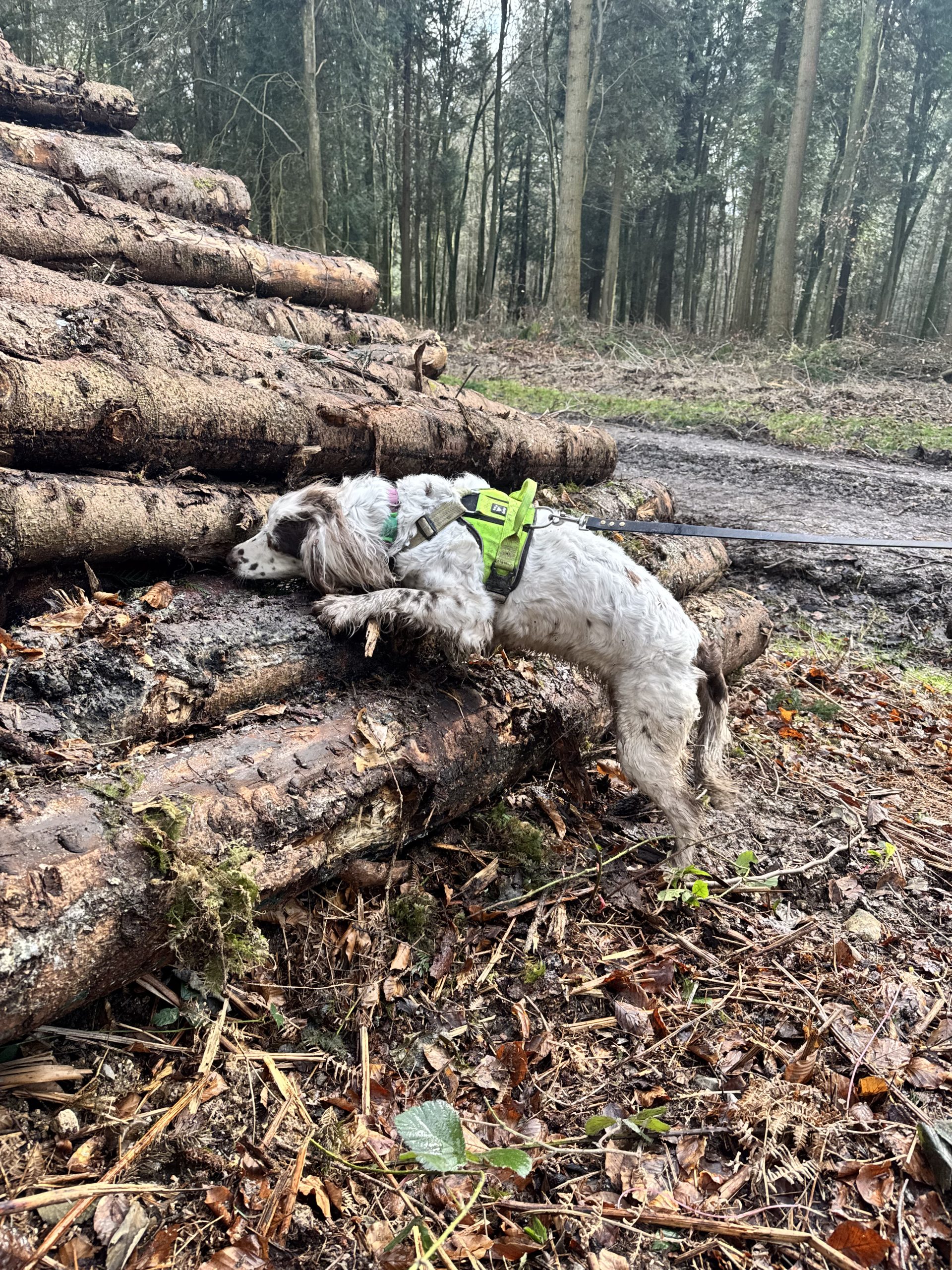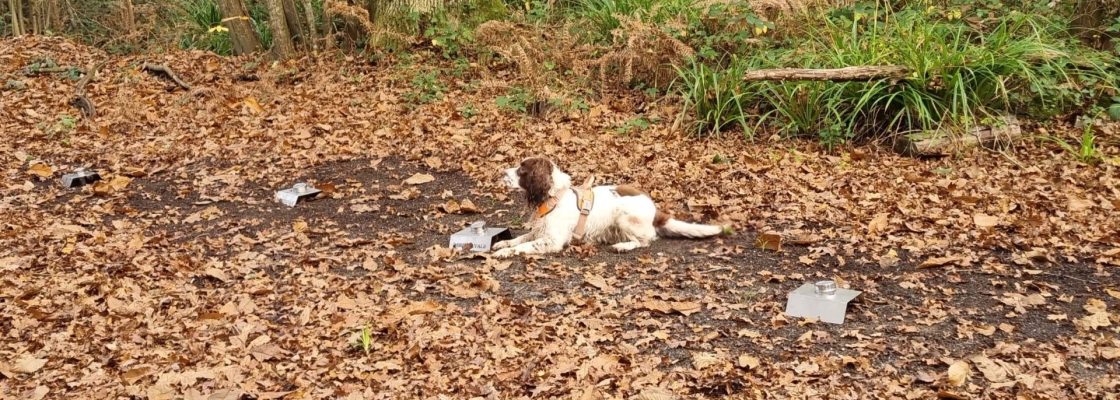Summary
As part of its response to the threat posed by Ips typographus (spruce bark beetle), the Forestry Commission (FC) has established a demarcated area (DMA) around confirmed outbreak sites in eastern and south-eastern England.
This DMA includes regulatory restrictions on the felling, stacking, and movement of spruce material. To enforce these rules, inspections are required both before felling and prior to moving timber – processes that must be carried out as efficiently and accurately as possible to support eradication efforts.
In countries where Ips typographus is endemic, detection dogs have proven effective in identifying infested trees by locating pheromone traces.
This project seeks to evaluate whether detection dogs could play a similar role in Great Britain, with a particular focus on their use during spruce movement authorisation inspections.

Research Objectives
The main objectives of the project are:
- a proof of concept study to confirm if detection dogs can be trained to identify Ips typographus beetles and distinguish them from other, non-regulated spruce bark beetles.
- to provide practical insights into the training and use of dogs as part of an active response into a regulated pest.
Latest Update
Detection dogs have now been trained to detect indirect scents of Ips typographus (in this case beetle frass and artificial pheromone) and previously frozen beetles.
Dogs proved able to transfer this training to indicate on live target beetles as part of a lineup. In addition, live-environment training has demonstrated that detection dogs can operate successfully in a simulated movement authorisation scenario.
Future work will expand training to include beetle material from different seasons, assess the feasibility of the use of scent extracts to improve training flexibility and attempt to quantify the potential efficiency improvements that detection dogs could bring to movement authorisation inspections.




